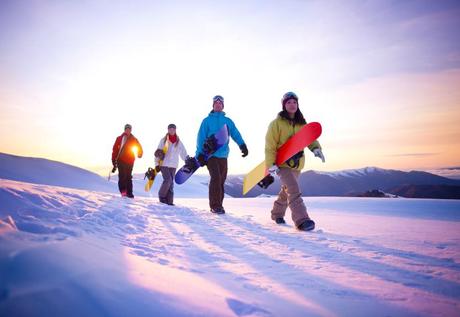
Skiing is a rich and varied sport, so much so that it can all be a bit overwhelming for the newcomer, so here are a few bits of basic advice on a small range of topics for general guidance.
Indoor ski slopes in the UK
Whether you want to perfect your professional turns or master a few basic moves before setting out on a skiing holiday in the Alps, there is a growing number of indoor snow centres and dry ski slopes in the UK for you to practice on. Most of them offer courses for beginners, from short introductions to intensive training and this is a great way of mastering the basics of skiing before you buy all the gear and head for an exotic Alpine resort. Many of them also offer freestyle nights for those with a taste for adventure, and there are normally courses for advances skiers as well.
Real snow ski slopes in the UK
The only ski resorts in the UK to feature naturally falling snow are in Scotland, although there are over 70 artificial ski slopes which are great for practicing on. The five real snow resorts in Scotland are world-class and as good as anything in the rest of Europe. In the Grampians have the resorts of The Lecht, Glenshee and Cairngorm, whilst Glencoe and Nevis Range are farther west towards Ben Nevis. The ski season in Scotland runs between December and April, and the costs are quite reasonable now that low budget airlines fly regularly out of cities like Inverness, Glasgow and Edinburgh. Taking a car and touring round each of these Scottish slopes would be really easy and probably the most scenic in the UK.
Best ski slopes in the world
Amongst the world’s best ski slopes are reckoned the Parssen in Switzerland; Sella Ronda in the Italian Dolomites; Canada’s South Face slopes at Lake Louise and Vallee Blanche at Chamonix in France. These offer a combination of beginner, intermediate and advanced levels and are amongst the best-equipped of ski resorts, with everything you need on site.
Snowboarding on a dry slope
Dry slopes provide snowboarders with an alternative terrain for the practice and enjoyment of their sport during the summer. They have cross-hatched solid metal bases, and although they have drawbacks such as short runs so you have to keep climbing to the top they do allow you to really work on your technique. Those who become competent snowboarders on dry slopes will graduate to the delights of real ones with relative ease.
Skiing on a dry slope
The same reservations and remarks apply to skiing on dry slopes as to snowboarding on them. Practising technique is their main advantage, but added to that will be the savings in both time and money if you have a dry slope within easy reach.
What to wear when dry slope skiing
Novice skiers and snowboarders usually complain about cold feet when they’re on the real slopes, but of course this doesn’t apply to dry slopes. Nonetheless, it’s as well to establish good habits and so thick socks and boots are recommended so that you don’t have to acclimatise your feet later for the real thing. It is best to wear a strong helmet on both dry and real slopes as this can be a dangerous sport. Some type of knee protection is also recommended for the inevitable falls and scrambles.
Visiting European ski resorts off season
The so-called Apres Ski Period is many skiers’ preferred time to hit the slopes as they’ll be less crowded and also cheaper than in the high, winter season. Most resorts stay open for a couple of months following the end of their peak season, and snow machines can take over if the snow gives out so the conditions will be just as good for skiing and snowboarding. For those not limited by school holidays, off season skiing makes great sense.
